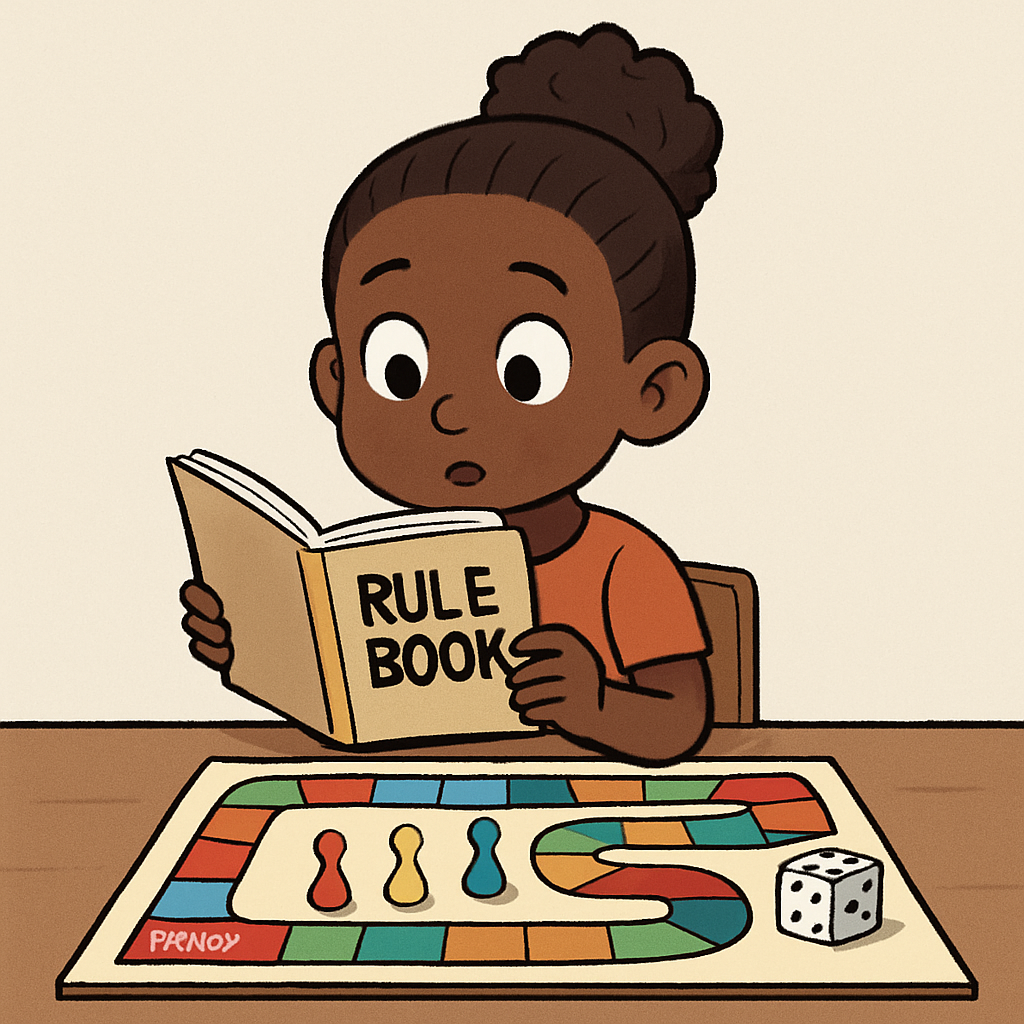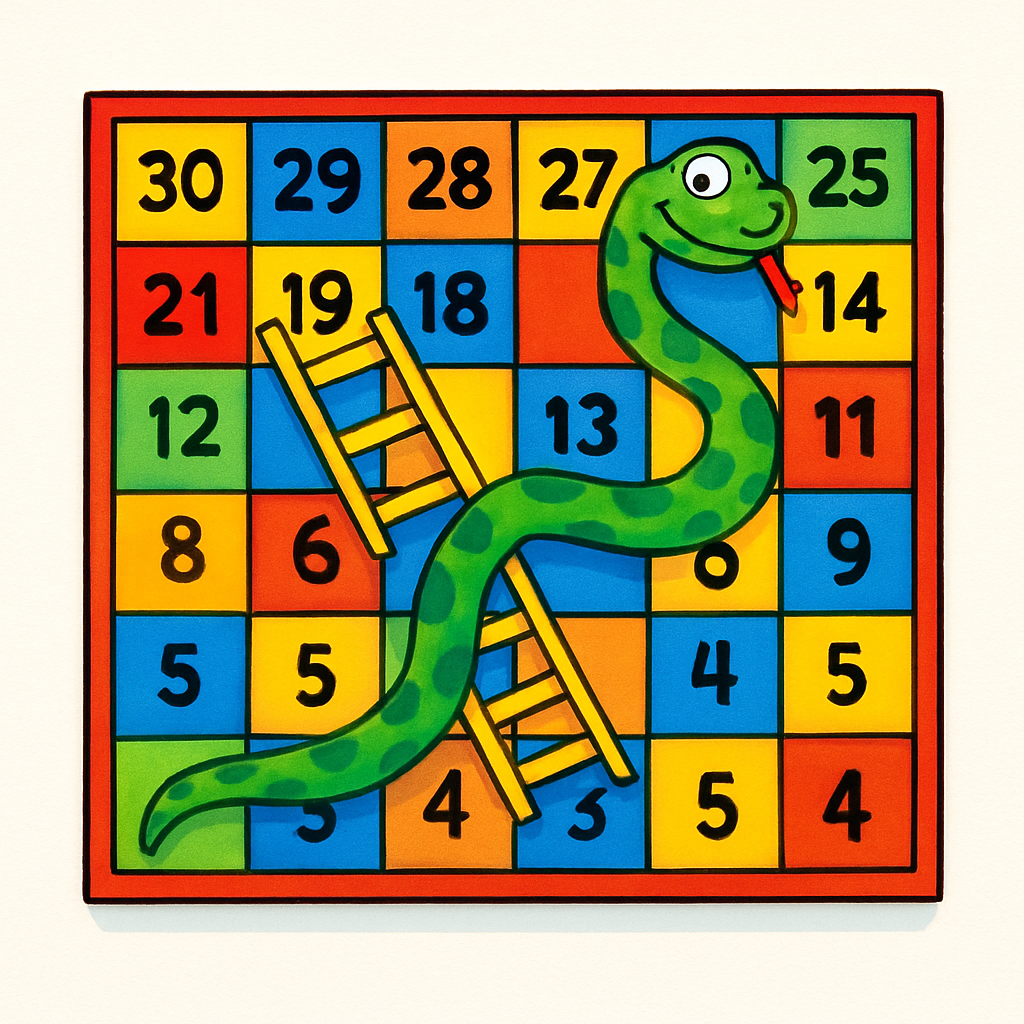
Begin by inviting a few quick examples of familiar games (like Snakes & Ladders or Uno) and ask pupils how they first learned them—by watching friends, from a grown-up, or by reading a rule card.
Prompt a short discussion about why games need clear rules.
Encourage students to think about why rules are so important. They keep play fair and predictable, help avoid arguments, and let everyone know what to do next.
To wrap up the discussion, ask pupils to recall a time a game felt confusing because a rule wasn’t clear. This helps them connect their personal experience to the need for clear instructions, a key idea in programming.
 On the board, create four clear headings to show the fundamental components of a game's rules: Setup, Turns, If → Then rules, and How to win.
On the board, create four clear headings to show the fundamental components of a game's rules: Setup, Turns, If → Then rules, and How to win.
Using Snakes and Ladders as an example, capture one simple rule under each heading. This will help the pupils see the clear, logical structure of a game's instructions.
Setup: Use a simple path board with START and FINISH, one counter per player, and one die. All counters begin on START.
Turns: On your turn, roll the die and move your counter forward that number of squares. Play passes clockwise.
If → Then rules: If you land on the foot of a ladder, then move up to the top of that ladder. If you land on the head of a snake, then move down to the tail.
How to win: The first player to reach the FINISH square wins.
This exercise shows how even simple games are built on a framework of clear, logical steps, just like a computer program.
Now, tell your students you're going to play a new game together that's similar to Snakes and Ladders, but with slightly different rules. Let them know it's the "Teacher vs. Class," and you'll play against them! Read through all the rules below with your class before you start.
Setup — Use a 5×5 grid with a single path from START to FINISH at opposite ends. Place two counters, one for the Teacher and one for the Class, and one die.
Turn Order — You and the Class will alternate turns. On a team's turn, roll the die and move that many squares along the path.
If → Then rules —
If BLUE, then move forward +2.
If RED, then move back −1.
If GREEN, then move forward +5.
If BLACK, then move back −3.
Otherwise, no effect.
How to win — The first counter to reach FINISH wins (no exact roll required).
Now, you're ready for the next step, where you'll begin to play!